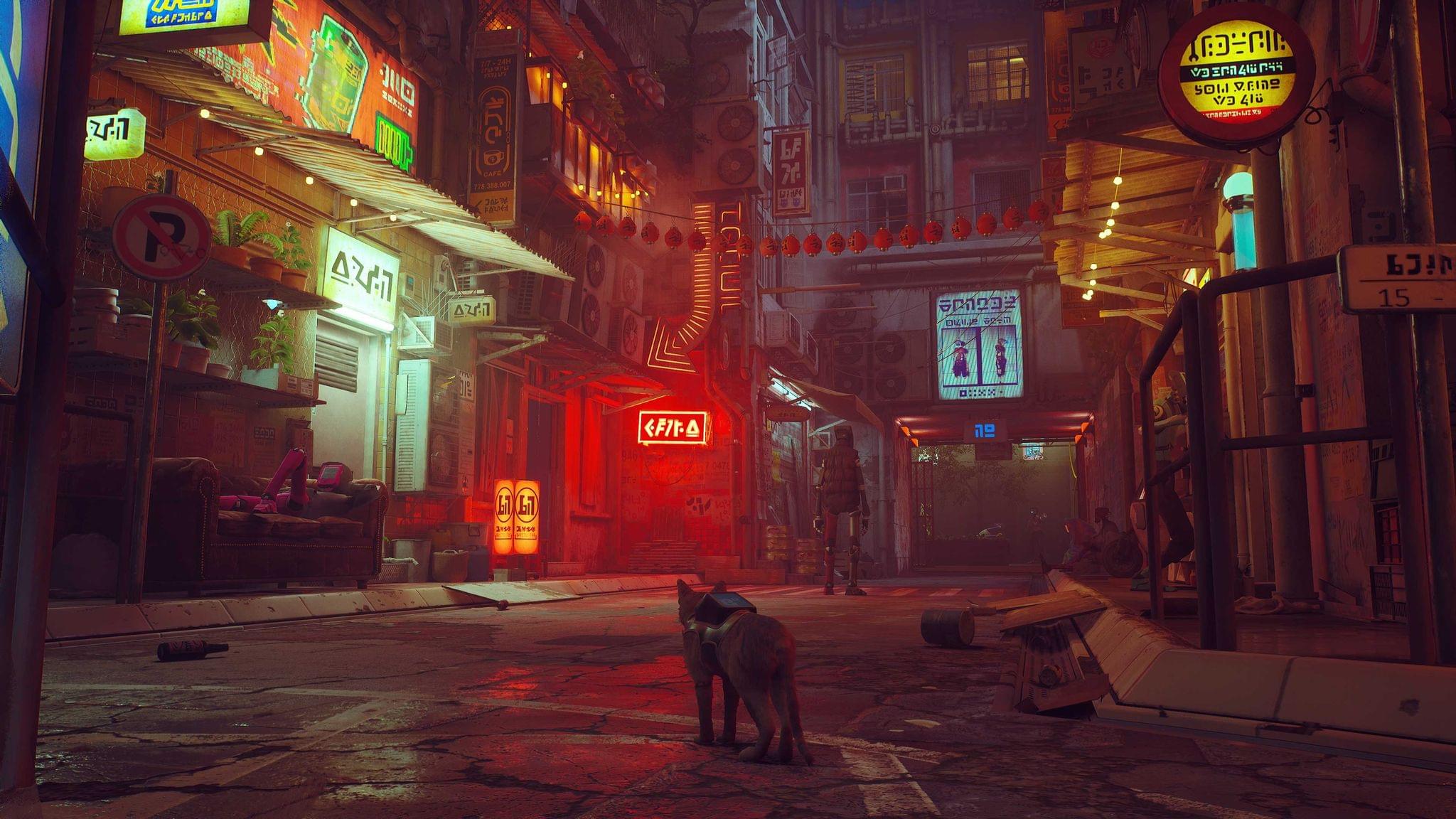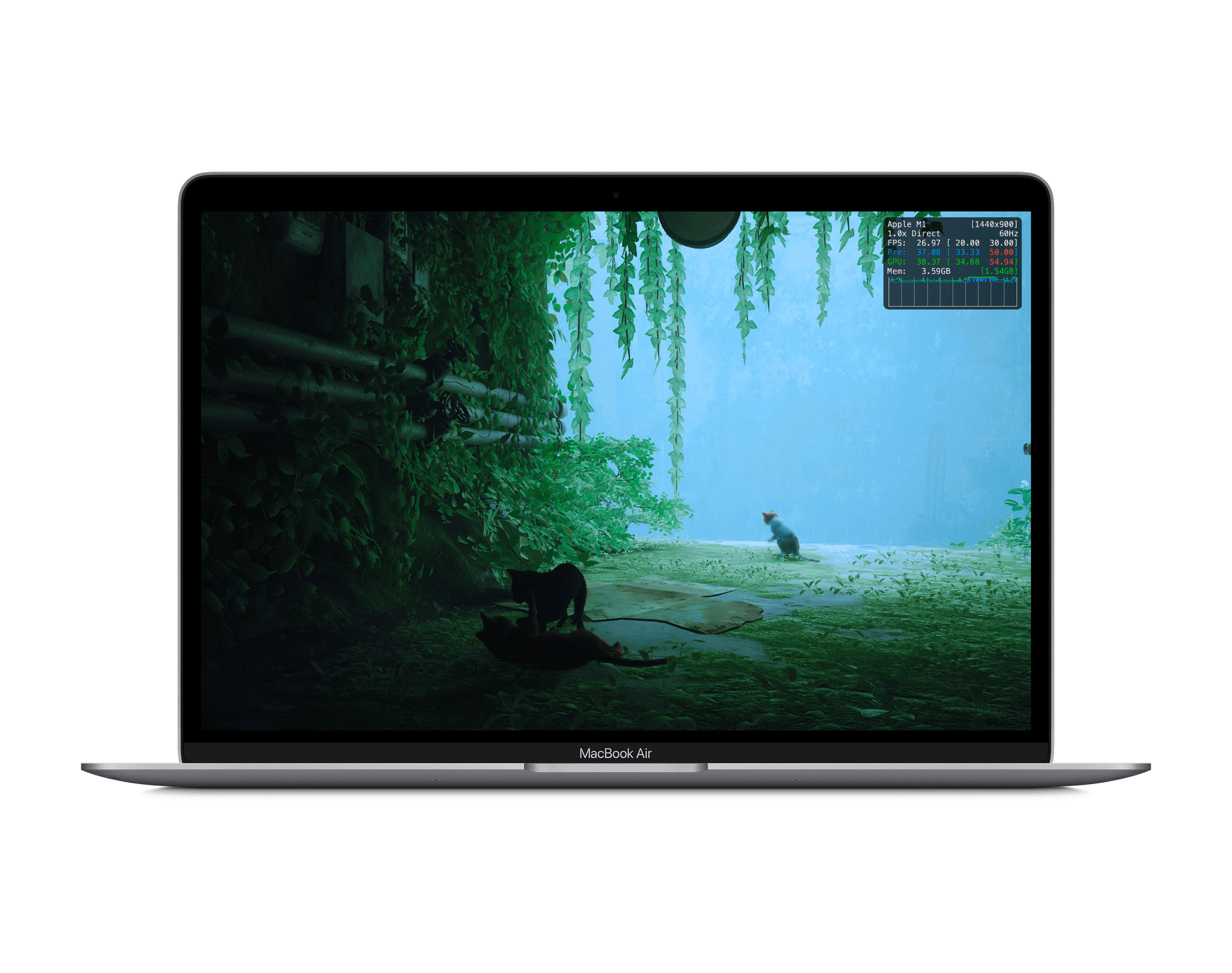Stray, a high-profile and well-regarded videogame that debuted in 2022, is now available on the Mac. Initially launched on PlayStation and Windows, followed by an Xbox version this past August, today’s Mac release is available on both the Mac App Store and Steam.
The game, created by BlueTwelve Studio and published by Annapurna Interactive, is set in a neon-lit, post-apocalyptic cityscape where you play as a cat. Thrown into an unfamiliar environment, your goal is to solve the mysteries of a dangerous rundown city aided by a flying robot named B-12.
Stray was generally well-received by reviewers, who appreciated how BlueTwelve imbued its cat protagonist with personality and captured life-like cat movement and behavior. As a result, it’s unsurprising that the number of systems on which you can enjoy Stray’s feline adventures has continued to expand.
I played Stray when it debuted on the PlayStation 5 and enjoyed it. The game’s controls are relatively simple, and the story isn’t terribly long, but the puzzles are challenging, and the cyberpunk visuals are stunning. It’s been a while since I last dipped into Stray, but the game was one of my favorites of 2022, so when I got the chance to play it a day before the launch, I jumped at the opportunity.
I’ve only had time to play Stray on the Mac for a few hours, navigating through the introductory scene and the early part of the game, so this isn’t a review. However, as someone familiar with the console version, I thought I’d share my early impressions playing on my M1 Max Mac Studio and my M1 MacBook Air.
I didn’t have high hopes for the M1 MacBook Air, and my instincts were correct. Stray may be rated on the App Store for the M1 and above, but the game is too much for Apple’s entry-level, first-generation M1 Mac to handle. I fiddled with the graphics settings, but even when I set Effects, Shadow, Texture, and Mesh Quality to low, I rarely hit 30 fps. Also, playing Stray was one of the few times my MacBook Air got noticeably warm on my lap. It clearly was struggling.
My Mac Studio fared much better. I cranked the settings up to see how it did and was happy to see that I was getting around 60 fps with occasional small dips in the heart of the game. However, that isn’t to say that there weren’t issues. Sometimes, the game would freeze as I passed a checkpoint, and the game autosaved my progress. I saw short freezes in a few other spots where the M1 Max seemed to have trouble keeping up with the action, too. Dialing back some graphics settings seemed to help but didn’t entirely eliminate the issues. For a game like Stray, that wasn’t a deal breaker because most of the game involves exploring and solving puzzles, but it was distracting.
Most of my testing was spent with MetalFX upscaling turned on. There’s a second option called ‘Built In,’ which worked a little better than MetalFX in some scenes, but in the short time I’ve had to play so far, the differences weren’t substantial.
Interestingly, Stray struggled the most in the opening sequence of events that set up the game’s premise. On the Air, frame rates dipped into the teens, making for a rough experience. The Mac Studio did far better, but it, too, struggled a bit. Once I was to Dead City, the game’s second chapter, the graphics smoothed out noticeably and were every bit as gorgeous as the console version.
Memory wasn’t a constraint in my testing. I saw usage climb to between 7 and 8GB on my Mac Studio after playing for about an hour, but with 64GB available, I had plenty of room to spare. My MacBook Air’s 16GB of memory wasn’t an issue on that system either.
Although the minimum target chipset for Stray is the M1, based on my experience, I wouldn’t recommend playing it on the lowest end of the M1 spectrum. Perhaps the developers can tune the game to play better on those systems in the future, but currently, you’re better off playing on a console unless you have a beefier Mac. Stray wasn’t perfect on my M1 Max, either, but the handful of issues I had were minor and didn’t prevent me from enjoying the game. Also, it stands to reason that the experience would be better on an M2 or M3 Mac, but I haven’t tested the game with Apple’s latest systems.
Stray supports third-party controllers on the Mac, which worked well in my testing. I connected an Xbox controller, and with Stray running in macOS Sonoma’s Game Mode, everything ran smoothly and responsively.
However, it’s worth noting that you can’t save your progress in Stray between multiple Macs, which I’d like to see added in the future. I’d also love to see iPhone and iPad versions of Stray released in the future. That said, if you haven’t played Stray before and have a Mac capable of running it at a consistently high frame rate, the Mac version is worth a look.
Stray is available on the Mac App Store for $29.99 and Steam for $19.79 as part of a limited-time sale.





